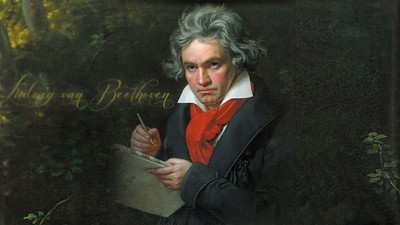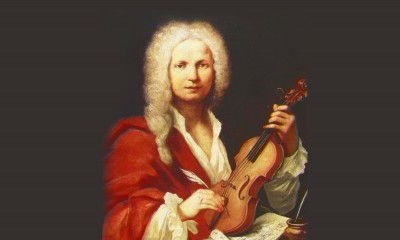As the English conductor Sir John Eliot Gardiner (one of the world’s leading interpreters of Bach’s music) stated, “Bach’s sheer stature as a composer is baffling and in many respects out of scale with all normal human achievement”. This statement cannot be stressed enough, what Bach achieved as a composer has never been and probably will never be equaled by another human being. His accomplishments are varied and far reaching, including the composition of such a colossal corpus of works of classical music that cannot be appropriately conveyed in a few words, yet, the sheer monumentality of his oeuvre is not the most dazzling; it is the level of consistency and speed at which he composed these works. Bach’s life’s work has been the object of extensive musicological study, and the modern catalogue features over eleven hundred completed works which have survived into our days, with many pieces having been lost.
Over the course of his long life (65 years was a long time to live in the eighteenth century), Johann Sebastian Bach worked almost exclusively for the church and the occasional private patron. His works are therefore very related to the sacred vocal and church music traditions featuring hundreds of cantatas, passions, masses, chorales and motets. He was also a prolific composer of instrumental music, especially for the instruments he mastered, the harpsichord, the organ and the violin. Concertos, suites, partitas, organ preludes, inventions, preludes and fugues flood his catalogue by the hundreds with a level of uniformity in quality and content that few others have come close to.
The 280 Mile Walk to a Concert
To begin this account of some of the most interesting events of Bach’s life, we are going to present the famous 280-mile walk story. In 1705, Bach was already an accomplished musician even at the young age of twenty, nevertheless, he still believed that he had much to learn. When notice spread that the revered Dietrich Buxtehude, at the time an 68 year old organist and composer, was going to present a series of concerts under the tile “Abendmusik”, meaning evening music in German, the young Bach decidedly set off on the long journey through the old salt route to Lübeck on foot. It was 280 miles north of his then current position in Arnstadt, definitely a long journey to make on foot, but determination was without a doubt one of Bach’s main qualities. The trip was very fruitful for the young composer, having had the opportunity to play with the older master and to learn from him, copying some of his works for further study and even performing in his concerts.
Bach’s Children
Johann Sebastian Bach came from a long lineage of musicians. His family name features professional performers and composers. Most importantly, his father Johann Ambrosius was a violinist in Erfurt and also director of the town musicians in Eisenach. Furthermore, this lineage didn’t stop with him. Johann Sebastian actually fathered around twenty children, yet, as was common at the time, several didn’t survive into adulthood. Nevertheless, among some of the ones who lived long enough, four of them became renowned musicians. These were:
- Carl Phillipp Emanuel, who is considered a key figure in the transition from the Baroque music period to classicism, having developed an expressive, rhetorically inclined and dramatically charged new style in instrumental music, known as empfindsamer Stil or ’sensitive style’;
- Johann Christian, also called “the English Bach”, who lived and developed his career as a composer and performer in London, eventually becoming a key influence for the concertos of Mozart;
- Wilhelm Friedemann, who is perhaps most recognized for being the original recipient of many of Bach’s pedagogical works. He was a great organist and composer as well, although his financial problems led him to die in poverty;
- Finally, Johann Christoph Friedrich was the most classical out of all Bach’s sons. He worked almost exclusively with noble patrons, getting away from the church which had been so important for his father’s work.
Bach in Prison
An interesting event in Bach’s life, which is not so usually commented on, is the episode in which he ended up in prison. In 1717, Bach had secured a new job as Kapellmeister at the court of Prince Leopold in Cöthen. Yet, his at the time current employer Duke Wilhelm Ernst was unwilling to accept his resignation, and with Bach’s repeated and obstinate claims to his right to quit whenever he saw fit, the tensions escalated and the Duke resolved to put the composer under arrest. Some stipulation proposes that Bach used this time to compose some parts of his magnum opus The well-tempered clavier. Nevertheless, the actual details of Bach’s four week stint in prison are foggy and unclear at best.
A Love of Coffee
Among the composer’s most curious and strange episodes is that of the so-called “Coffee Cantata”. Perhaps we can assume the reason for Bach’s prolific output was due to Bach’s consumption of more than 30 cups of coffee a day.
As is common knowledge, Bach composed around 300 cantatas, with “only” 194 having survived. Most of these were sacred and meant to be performed on Sunday’s religious service. What is not so well known is that Bach did compose some secular cantatas, and although most of them were lost, one in particular has survived. It achieved an enormous level of fame due to its peculiarity of being satirical, almost common, due to focusing on the topic of a woman who is addicted to coffee, a beverage with a growing popularity among the citizens of Leipzig during Bach’s tenure as Kapellmeister in its main churches.
Bach’s Sleep Music
Perhaps Bach’s keyboard classical music masterpiece, the Goldberg Variations, is also one of his most famous and universally recognized pieces. The story behind the piece is at least partly responsible for such fame. As recalled by early Bach biographer Johann Nikolaus Forkel, this set of variations was composed for the former Russian ambassador to the electoral court of Saxony, Count Keyserling. This count accommodated the virtuoso harpsichordist and composer Johann Gottlieb Goldberg while visiting Leipzig to make him receive musical instruction from Bach himself. As the count was prone to illness and insomnia, he requested Bach to provide some pieces for Goldberg to play for him during his long sleepless nights. Bach produced the set and in this act not only created one of the first ever recorded cases of instrumental music allegedly conceived to conciliate sleep, but also carved his name into the history of variation form, providing posterity with a mammoth work which is still revered to this day as a summit of the genre and keyboard music in general.
The Eye Operations
Johann Sebastian Bach’s final year was occupied with a serious medical ailment. His eyes were suffering from cataracts and this complicated his composing and performing. Bach was very determined to complete his final work, The Art of Fugue, on the advice of friends, Bach put himself in the hands of the English travelling eye surgeon John Taylor, who also operated and botched the eyes of the composer Handel. Taylor’s procedures and his own incompetence led him to commit several atrocities, especially during post-surgery, like dripping fresh dove blood on Bach’s eyes to help him recover from the pain and heal. The story finishes on a dark note as Bach ended up dying from complications due to the surgery, after suffering enormous pain and a ten day coma. Ironically, John Taylor himself ended up completely blind.
Suggested Classical Music Playlists
In the twenty-first century, more than three hundred years after Bach’s birth, his music is still relevant and more popular than ever. On top of being one of the central composers of the Early music performance movement, Bach’s pedagogical pieces are still a staple repertoire for almost any instrument. Furthermore, several world renowned musicians, like the aforementioned conductor John Eliot Gardiner or the pianist Andras Schiff, have championed his works and kept them alive in the modern concert stage.
Finally, among the mass public, Bach’s work has been championed for its utilitarian qualities, as music for concentration and focus, relaxation music and even as classical sleep music. Many of Bach’s pieces lend themselves very naturally to these purposes due to their slow pace, tender sonority and mostly a polished surface without any striking changes of dynamic or speed. Among the many pieces we can recommend, the following works are notable:
- Second movement of the Orchestral Suite No. 3 in D major, BWV 1068. (Generally known as Air on the G string)
- The final movement of the cantata Herz und Mund und Tat und Leben, BWV 147 (Jesu, Joy of Man’s Desiring)
- Aria – Goldberg Variations
- Prelude – Cello suite in G major
- Prelude and Fugue No.8 in D sharp minor – Well Tempered Clavier Book I
Calm Radio’s many online peaceful calming classical music channels offer lighter easy-listening music & sleep music choices, but also relaxing classical music channels such as symphonies operas organ harpsichord classical piano music and beautiful cello music, plus other Baroque music channels romantic classical and modern classical music.
Happy listening!
~
All about free Calm Bach classical music classical piano music and free Baroque music that is relaxing and calming music for sleep and relaxation. Free beautiful cello music from JS Bach is on our Peaceful Bach channel.




